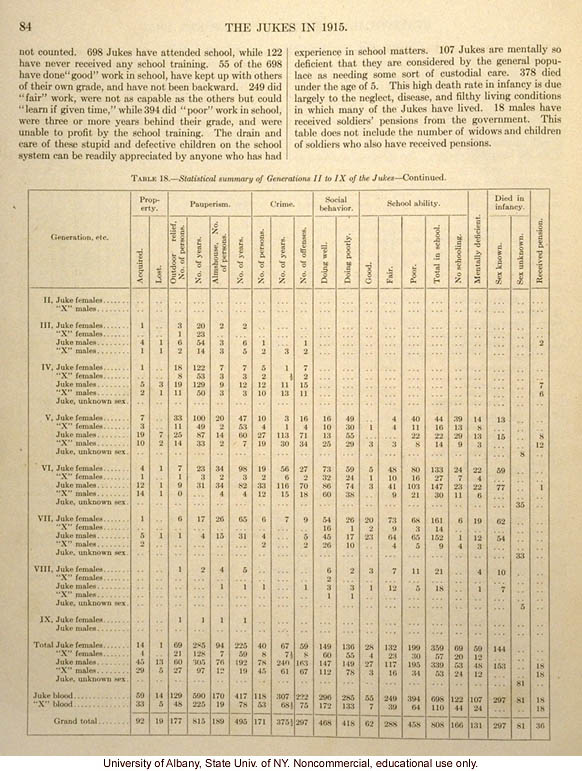84 The Jukes in 1915.
not counted. 698 Jukes have attended school, while 122 have never received any school training. 55 of the 698 have done "good" work in school, have kept up with others of their own grade, and have not been backward. 249 did "fair" work, were not as capable as the other but could "learn if given time," while 394 did "poor" work in school, were three or more years behind their grade, and were unable to profit by the school training. The drain and care of these stupid and defective children on the school system can be readily appreciated by anyone who has had experience in school matters. 107 Jukes are mentally so deficient that they are considered by the general population as needing some sort of custodial care. 378 died under the age of 5. This high death rate in infancy is due largely to the neglect, disease, and filthy living conditions in which many of the Jukes have lived. 18 males have received soldiers' pensions from the government. This table does not include the number of widows and children of soldiers who also have received pensions.
[tabular material]
Table 18. - Statistical summary of Generations II to IX of the Jukes - Continued.
[end tabular material]
[end]


